First Official BLM Roundup
Reprint from WildHorseEducation.org
Perspective: 1975, First BLM Wild Horse Capture
In 1975 the first wild horses were removed from public land by Bureau of Land Management (BLM). The removal took place at Stone Cabin in the state of Nevada. This removal was done with a water trap and with no less controversy than occurs today. (It should be noted that in 1976 The Federal Land Policy Management Act, FLPMA, was passed).
Litigation was filed. It should be noted (in this very first case) that even though the court order allowed the removal, range degradation was attributed to years of overgrazing and not likely due to a recent increase in a “few” wild horses. Yet the court noted that the situation on the range simply was the situation and the wild horses were removed for their “protection.” The court also noted that simply because a range is over grazed it was not reason for BLM to simply continue to roundup wild horses, “This Court is not saying that the BLM is free to round up wild horses whenever a particular range has an overgrazing problem. Nor is the Court saying that every time the removal of wild horses will have a limited, slightly positive effect on the environment of the range, the BLM can proceed to remove a certain number of those horses. BLM officials admit that more round-ups of wild horses may be necessary in the future. This Court decides only that the Stone Cabin Valley round up currently underway may continue as an interim measure to preserve the range until the EIS required by Judge Flannery is filed in 1977. This Court presumes that future round ups will be undertaken only after the data contained in the 1977 EIS has been evaluated and all other alternative actions have been considered, as required by NEPA. In other words, this opinion should not be read as giving the BLM a blank check to order the removal of wild horses without filing an impact statement whenever it determines that a range is overgrazed.”
In addition the court noted:
From the court order: The method being used is termed ‘water trapping‘. A corral is constructed which encircles a watering hole used by the horses. A man hiding in a blind nearby closes the corral gate whenever horses enter to use the water hole. The trapped horses are then transported to a holding corral, where medical tests and administrative tasks are performed. The horses are kept for a period of three or four weeks in the holding corral, pending the test results. The use of helicopters is thought to be a more humane method of gathering these animals, but this method is prohibited by 18 U.S.C. § 47. BLM has agreed with plaintiff’s suggestions not to use barbed wire on the corrals and not to use the tranquilizer Sucostran, in an attempt to minimize the injuries to the horses, and provide the most humane conditions possible. See the letter from defendant Berklund to plaintiff’s counsel, dated July 17, 1975.
(notation: In 1976 Congress amended the act to allow helicopter use in wild horse and burro roundups. A huge push was being made to allow permitted “mustanging,” a helicopter was allowed as a preferred method to mustanging.)
From court documents: BLM has received applications from interested individuals throughout the country concerning the acquisition of a wild horse. A copy of the application form is attached to plaintiff’s original complaint. Wild Horse Annie’s organization, WHOA!, has been involved in screening applicants to insure that the captured horses go to people who can provide a good home for them. Statutory authority to distribute the captured horses to individuals is found in the Wild Horses’ Act at 16 U.S.C. § 1333(b), and the regulations confirm the authority of BLM to make such arrangements for private distribution of excess horses. 43 C.F.R. § 4712.3-2(b)


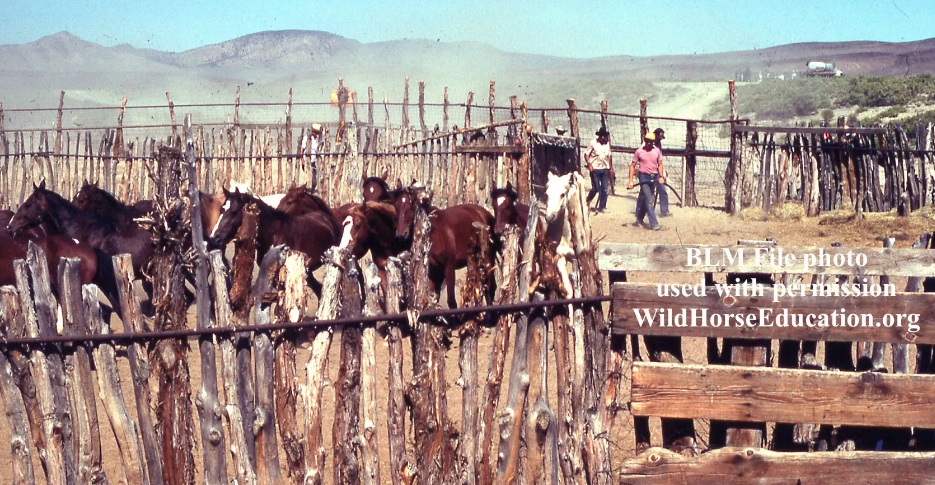



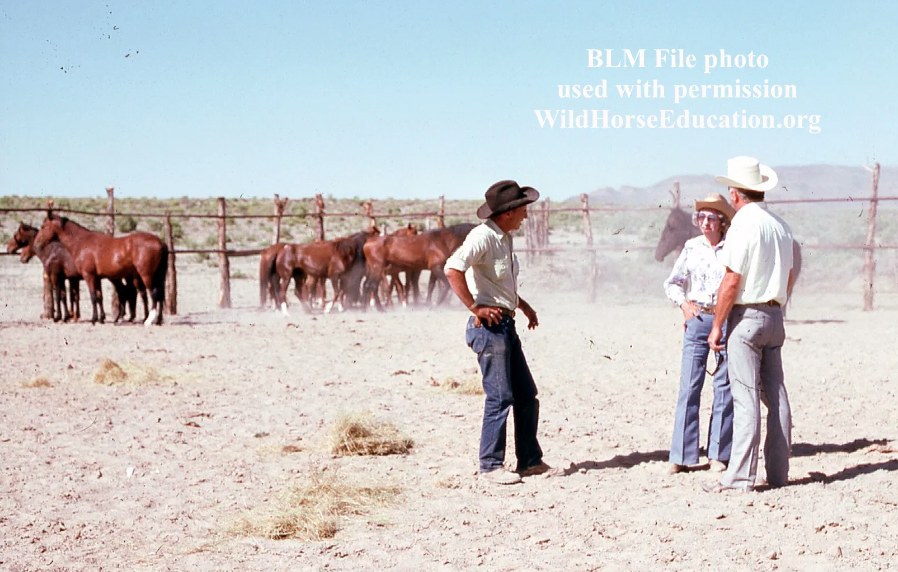


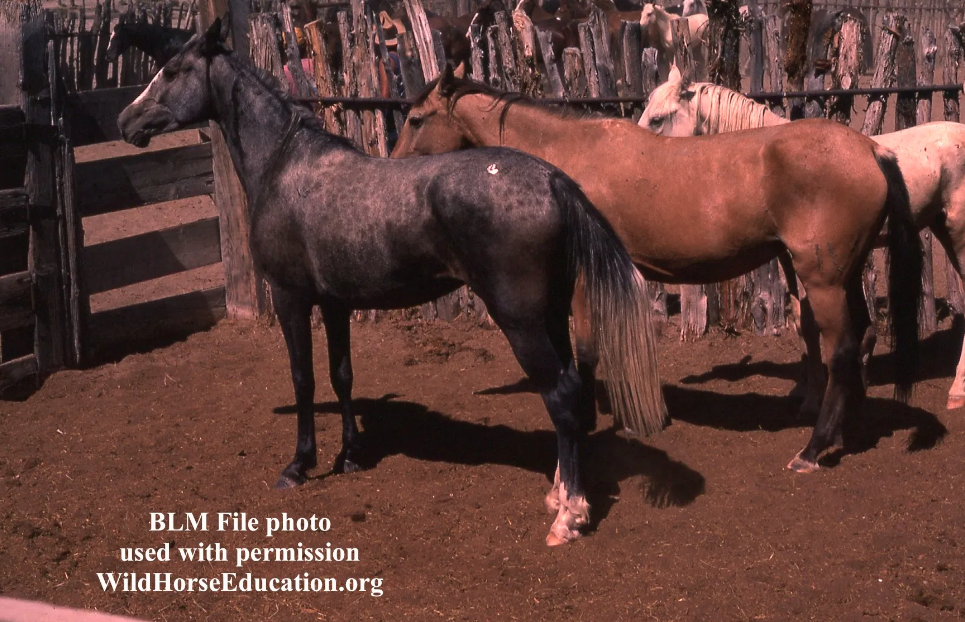

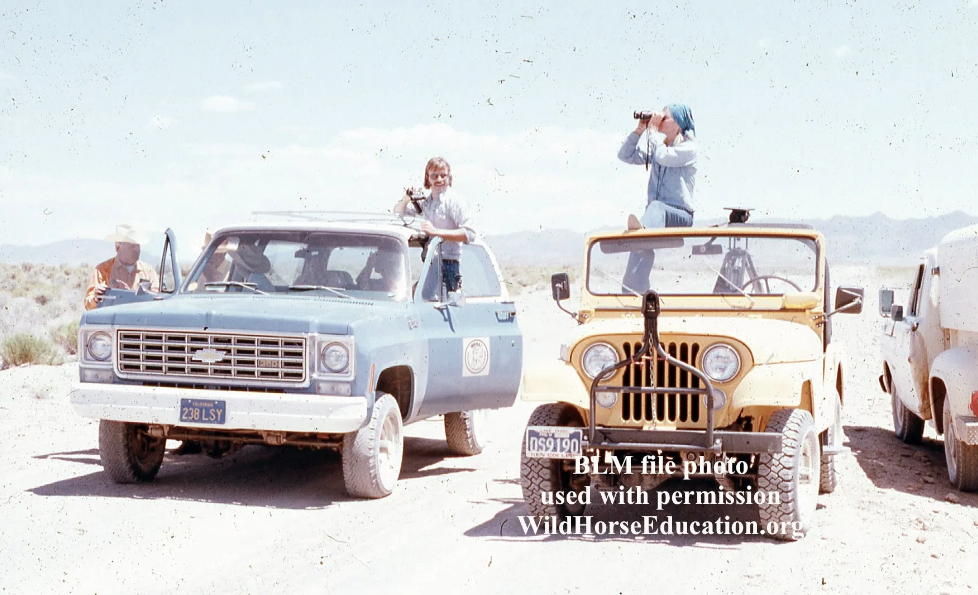
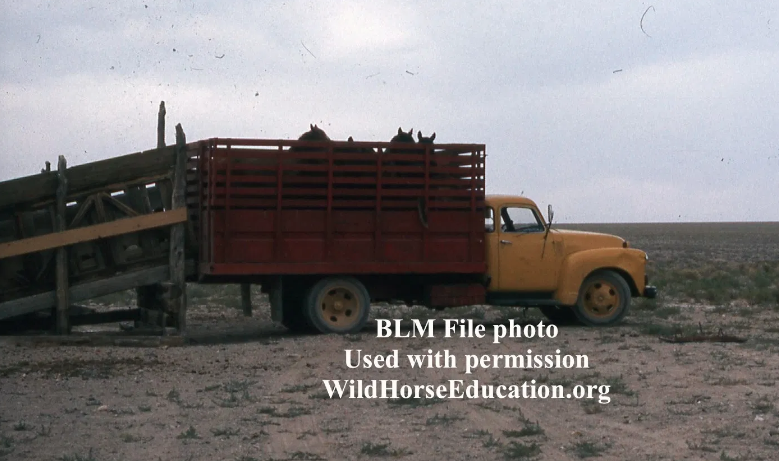

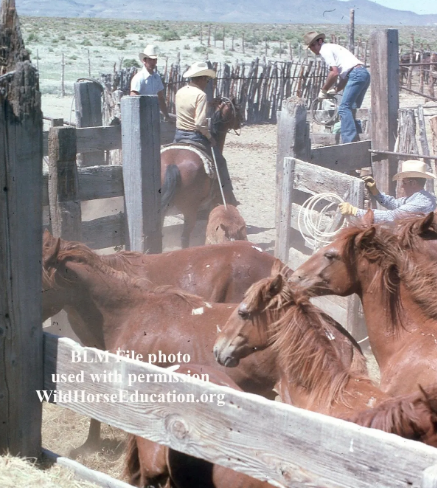

The photographs in the slideshow above were provided by BLM, reproduced here with permission. It should be noted that Velma Johnston, “Wild Horse Annie,” died in 1977. Velma was present with a bodyguard, her life had been threatened. Her escort, Alan Kania, later went on to write “Wild Horse Annie: Velma Johnston and Her Fight to Save the Mustang.”
Exhibit created and presented by Wild Horse Education.
We thank the Nevada Historical Society and the University of Nevada Reno for providing permissions to feature material from their collections.
The content of this exhibit is protected under copyright laws. Much of this content can only be reproduced through written permission. Contact Laura@WildHorseEducation.org for more information.



